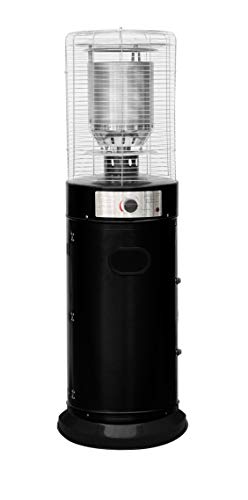15 Things You've Never Known About Garden Heating Solutions
Garden Heating Solutions: Enhancing Outdoor Spaces Year-Round
As seasonal modifications bring differing temperature levels, garden lovers face the challenge of keeping their cherished outdoor spaces. Whether for cultivating plants, amusing visitors, or merely enjoying the fresh air, garden heating solutions are essential to optimizing enjoyment and performance. This article explores various options available for heating gardens, consisting of conventional and modern solutions, their benefits, and useful suggestions for application.
Understanding the Need for Garden Heating
A well-maintained garden ought to be a year-round sanctuary, offering reprieve in both summer and winter. The requirement for garden heating develops from:
- Frost Protection: Certain plants, particularly tender ranges, require security from frost to survive cooler months.
- Extended Growing Seasons: Heating solutions can enable earlier planting in spring and later gathering in fall.
- Comfort Optimization: Outdoor events and activities can occur more conveniently with controlled temperature levels.
Kinds Of Garden Heating Solutions
Garden heating solutions can be divided into several classifications based upon their innovation and fuel source. Here's an in-depth take a look at some popular options:
1. Electric Heaters
Electric heaters are a versatile option for smaller gardens and patio areas. They are easy to set up and run, offering instantaneous heat with very little effort.
- Kinds Of Electric Heaters:
- Patio Heaters: Freestanding units with a heating aspect that radiates warmth.
- Wall-mounted Heaters: Ideal for small spaces; these heaters conserve ground space while offering heat.
- Portable Electric Fans: Great for targeted heating in specific locations.
2. Gas Heaters
Gas patio heaters are a standard choice for outdoor heating and are widely appreciated for their efficiency and visual beauty.
- Types of Gas Heaters:
- Propane Heaters: Easy to transport and set up, appropriate for most outdoor settings.
- Natural Gas Heaters: Permanent fixtures, perfect for areas with existing natural gas lines.
3. Wood-burning Solutions
For a rustic touch, wood-burning solutions such as fire pits and chimineas add warmth and ambiance to gardens.
- Advantages and disadvantages of Wood-burning Heating:
- Advantages: Aesthetic appeal, social environment, and effective heat circulation.
- Drawbacks: Requires more maintenance, management of ashes, and possible fire dangers.
4. Infrared Heaters
Infrared heaters use infrared radiation to directly warm things, making them energy-efficient and perfect for outdoor spaces.
- Advantages: Immediate heat, minimal energy loss, and viability for all weather.
5. Outdoor Heating Mats and Blankets
For smaller patio locations or specific zones in a garden, heating mats and blankets can be an ingenious solution to supply an extra layer of warmth.
Considerations for Choosing a Heating Solution
When choosing the very best heating solution for a garden, numerous factors should be examined:
- Garden Size: Larger areas might require multiple heating sources for efficient heat.
- Budget plan: Various options exist at various price points. Buy Patio Heating -effectiveness can identify the chosen approach.
- Safety: Evaluate the security functions of the heating options, particularly when using gas or wood-burning solutions.
- Aesthetic Appeal: Integration with garden style can improve overall visual satisfaction.
Table 1: Comparison of Garden Heating Solutions
Type
Installation
Fuel Source
Effectiveness
Cost
Electric Heater
Easy
Electricity
Rapid/Immediate
Moderate
Gas Heater
Moderate
Propane/Natural
High/Effective
Moderate to High
Wood-burning Option
Moderate/Hard
Wood
Efficient
Low to Moderate
Infrared Heater
Easy
Electricity
Immediate
Moderate to High
Heating Mats/Blankets
Easy
Electricity
Targeted
Low to Moderate
Executing Garden Heating Solutions
To ensure effective heating in outdoor settings, a tactical technique is necessary. Here are some useful pointers:
- Evaluate the Layout: Consider the garden layout to identify locations where heating is most required.
- Choose Multidirectional Heaters: This will assist disperse heat more equally across the space.
- Improve Insulation: Utilize windbreaks (like garden walls) or heat-retaining materials around the heating setup.
- Incorporate Decor: Attractive designs of heating systems can enhance the garden's ambiance while supplying heat.
- Routine Maintenance: Ensure that heaters (specifically gas and wood-burning) are preserved for optimum performance and safety.
Frequently Asked Questions About Garden Heating Solutions
1. How safe are electrical heaters for outdoor usage?
Electric heaters created for outdoor usage are generally safe when installed properly. Always follow maker standards and security instructions to alleviate risks.
2. Can I leave my gas heater outside throughout winter season?
While many gas heaters are constructed for endurance outdoors, it's recommended to cover them or keep them inside your home to safeguard them from severe weather.
3. Exist energy-efficient options for heating my garden?
Yes! Infrared heaters and heating mats are particularly energy-efficient as they focus heating in specific locations instead of warming the surrounding air.
4. What are the best plants to grow in a warmed garden?
Popular choices include tomatoes, herbs, peppers, and other tender plants that prosper in temperatures above 50 ° F (10 ° C).
Garden heating solutions exceptionally improve outdoor spaces, permitting year-round satisfaction and optimized plant growth. By understanding click of heating options available and making notified options based upon individual choices and particular garden conditions, garden enthusiasts can transform their outdoor areas into relaxing retreats, regardless of the season.
